This is Clouds Form Over Land, weekly writing about life at sea and going ashore.
Last Monday, we woke up in Charleston, South Carolina, and prepared to head offshore for our final ocean passage of this 9000 sailing trip.
We have left countless docks and the leaving has become a familiar routine. Fill the water tank, deposit our trash, check the engine oils, sneak in a hot shower, walk on land, unplug the shore power cable, and the sometimes large category of tasks we call “general tidying”.
Before leaving the docks on the Ashley River, I dropped off a few items at the informal “free table” found at almost every marina. We said goodbye to a pair of brothers who have been traveling on the Intracoastal Waterway. Since leaving Florida, we have met more and more boaters flocking North like us. According to the insurance companies, hurricane season is underway. At this time of year, the storms head into the Gulf of Mexico. Later on, they curve north up the Eastern Seaboard. We have been experiencing lots of atypical weather, both ahead and behind “schedule”, and it will be a relief to reach the Chesapeake.
After thirty hours at sea, we arrived in Southport, North Carolina, and said hello to the Intracoastal Waterway. The Coast Guard was doing a drill in a small bay, while dolphins jumped nearby. Families winding down Memorial Day weekend had fishing poles in the water, on board watercraft of all kinds. One boat towed another, all souls aboard laughing at whatever circumstance brought about this casual rescue mission.
We squeezed in between two catamarans on the “face dock”, a new vocab word for us, meaning the long dock facing the river. We walked to a park nearby, sat on a bench, and remarked that we were back in pine tree territory. The nearby restaurant was closed to recover from the holiday, so we retired early. The rigamarole of chores unfurled on Wednesday morning while waiting for the tide to turn: laundry, diesel, and a bike ride to Dollar General to pick up toothpaste.
Stopping and starting the boat is often more labor-intensive than keeping it going —researching and securing the next step, resting up, and gathering what we can from where we are.
Traveling inland is a different bird than these offshore jumps. More focus is required to steer in the channel, away from other vessels, and through bridges. Our 44-year-old, 40-horsepower diesel engine vibrates and chugs along. The boat stays flat, except when a fast-moving boat passes us at close range or the wind kicks up waves on the river.
Rich grasses line much of this area, providing homes for sea creatures that have been here longer than I can fathom. We watched the Hurricanes episode of Explained on Netflix and learned about how vital this living landscape is when water levels change, especially beyond their usual tidal limits.
Humans have made all kinds of hideaways along these wetlands as well, with great diversity in their setups. Large homes built right up to the property line are prevalent down south, gradually spacing out as we get further from the ocean.
I’m typing this up as we head to the Pungo River Canal and Scott just exclaimed “wow, it smells like woods out here!”.
On Wednesday, we slept tied to a mooring ball at Carolina Beach. We anchored near Wrightsville Beach on Thursday, taking the dinghy into shore for dinner with my great-uncle Jay. After flinging ourselves into the unknown and isolation of sailing so far on our own vessel, it was grounding to hear “You look so much like your mom!” and to think, “You look so much like Nana”.
We anchored near Topsail Island on Friday and tucked in for the weekend in Swansboro. A weather system near the Bahamas was pulling in cold air from up North, which in part is why we can see and smell the wildfires ablaze in Ontario. The municipal docks are used by local boaters around lunch hour and a bit chaotic as the current is amplified in the harbor by the Bogue River. A friendly sailor helped us onto the dock and took me out for shrimp and grits the following day after church. His wife Lori recently self-published a novel she’s been crafting for years. Gary crossed the Atlantic years ago in a twenty-something-foot boat called Prudence and teaches celestial navigation.
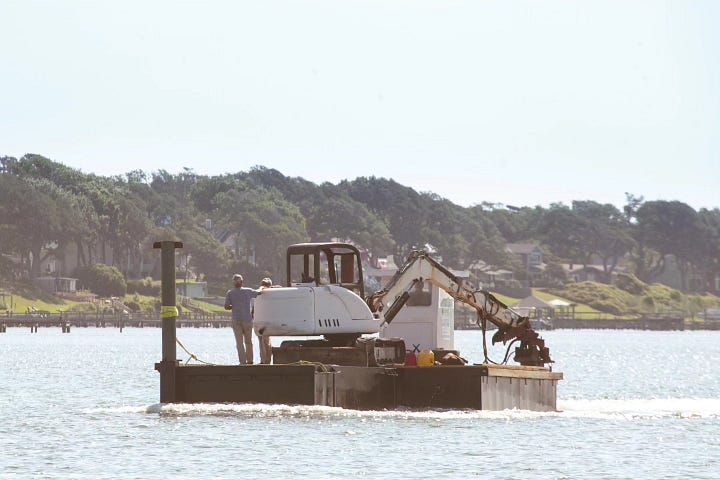
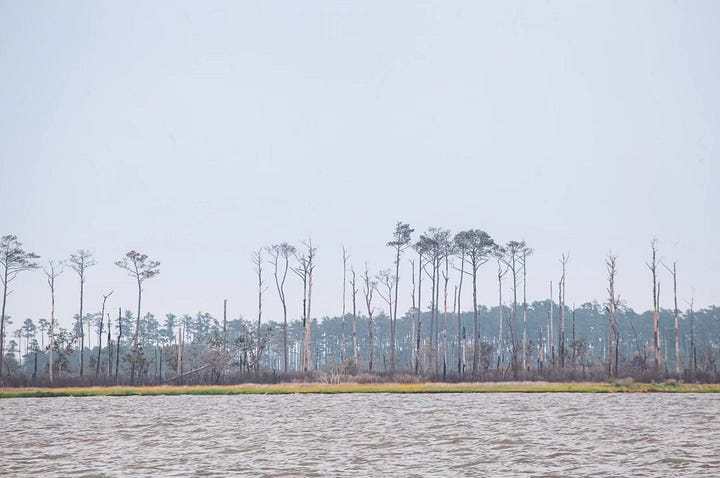
Moving 20-30 miles/day is just about the right pace for us. Our engine can push us along at 5 knots (nautical miles/hour), but speed over ground tends to be a bit lower with the flow of the various rivers and the impact of the tides.
My alarm sounds at 5 AM these days. I plug in the coffee pot and turn on lights and music to rouse my brain and crew. We aim to be off the dock by 6:30. We could do all our tasks in less time, and when we do so without rushing, we cast off early. Most days we pull into the dock or anchorage around 3 PM.
As we near Virginia, it’s possible to begin actioning our new life on land. Job interviews, apartment listings, and events scheduled for summer. We have twelve or so stops on the Intracoastal, each with its own character and constraints. One could probably spend years considering how to go up this coastline, without ever making a mile.
My writing coach and friend Gillian suggested taking this chapter of life a few days at a time. My inclination has always been to operationalize a plan, and that knack has been essential for moving us from port to port for over two years. It’s such a dance to play between reflecting on the magic we’ve just experienced, securing our next moves, and being present for what’s right here.
Checking the weather has been a major responsibility, mostly tackled by Scott, and increasingly supported by me. With modern data collection and processing, combined with seasonal patterns understood over generations of observations, we have avoided the shipbreaker storms. Weather predictions are updated every twelve hours in the Predict Wind app. We can see 10+ days, but generally, limit our trust to three days.
At the three-day scale, I can make a plan for where to moor the boat that is scaled to the weather and my crew’s capacity. In these inland waterways, marinas have more space available and can accommodate quicker reservations, whereas further south slips are booked out weeks or months in advance. We are weeks away from experiencing much less uncertainty, but still decidedly on the journey.
My time is running short, so I’ll leave with this osprey, caught with a zoom lens atop a platform built just for them.

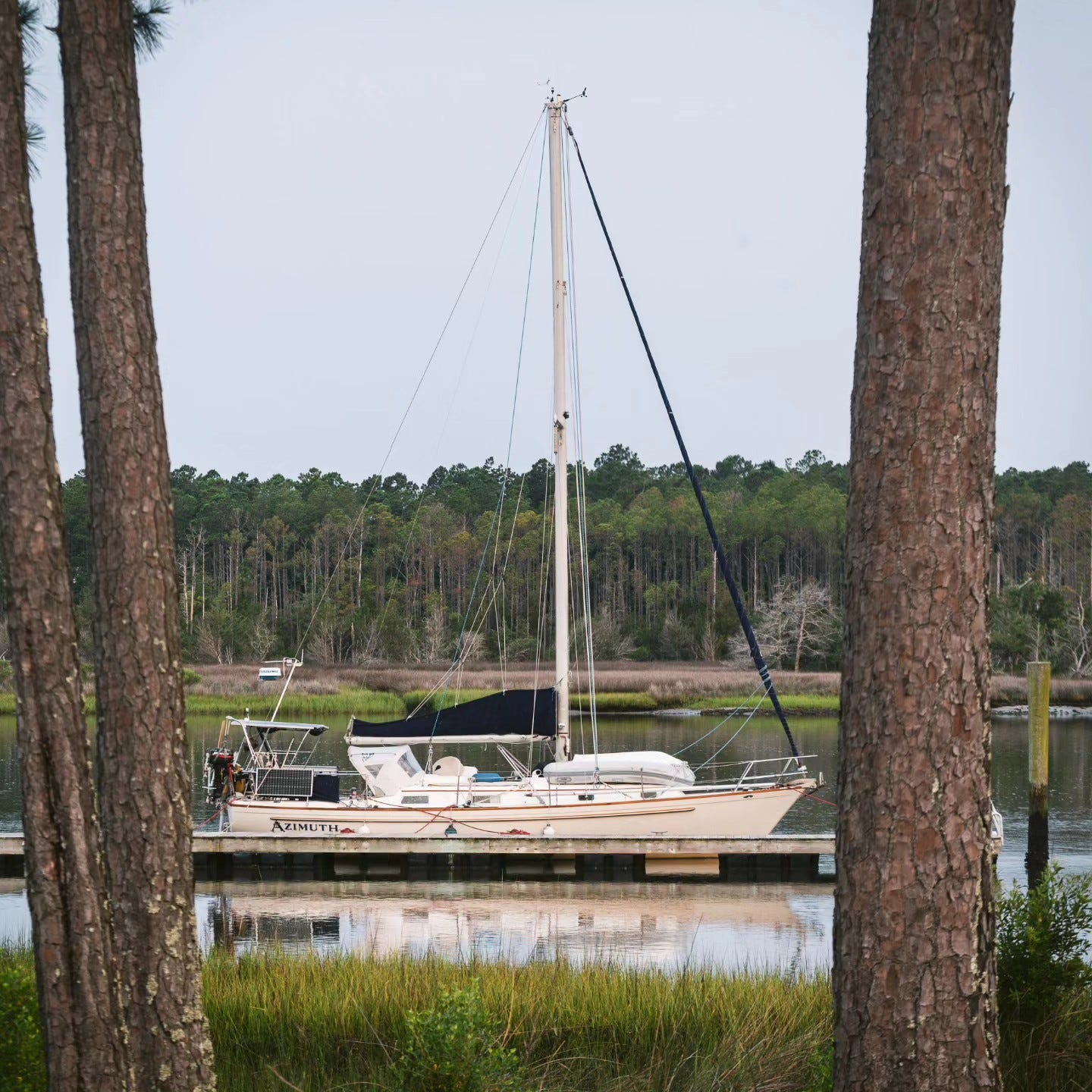
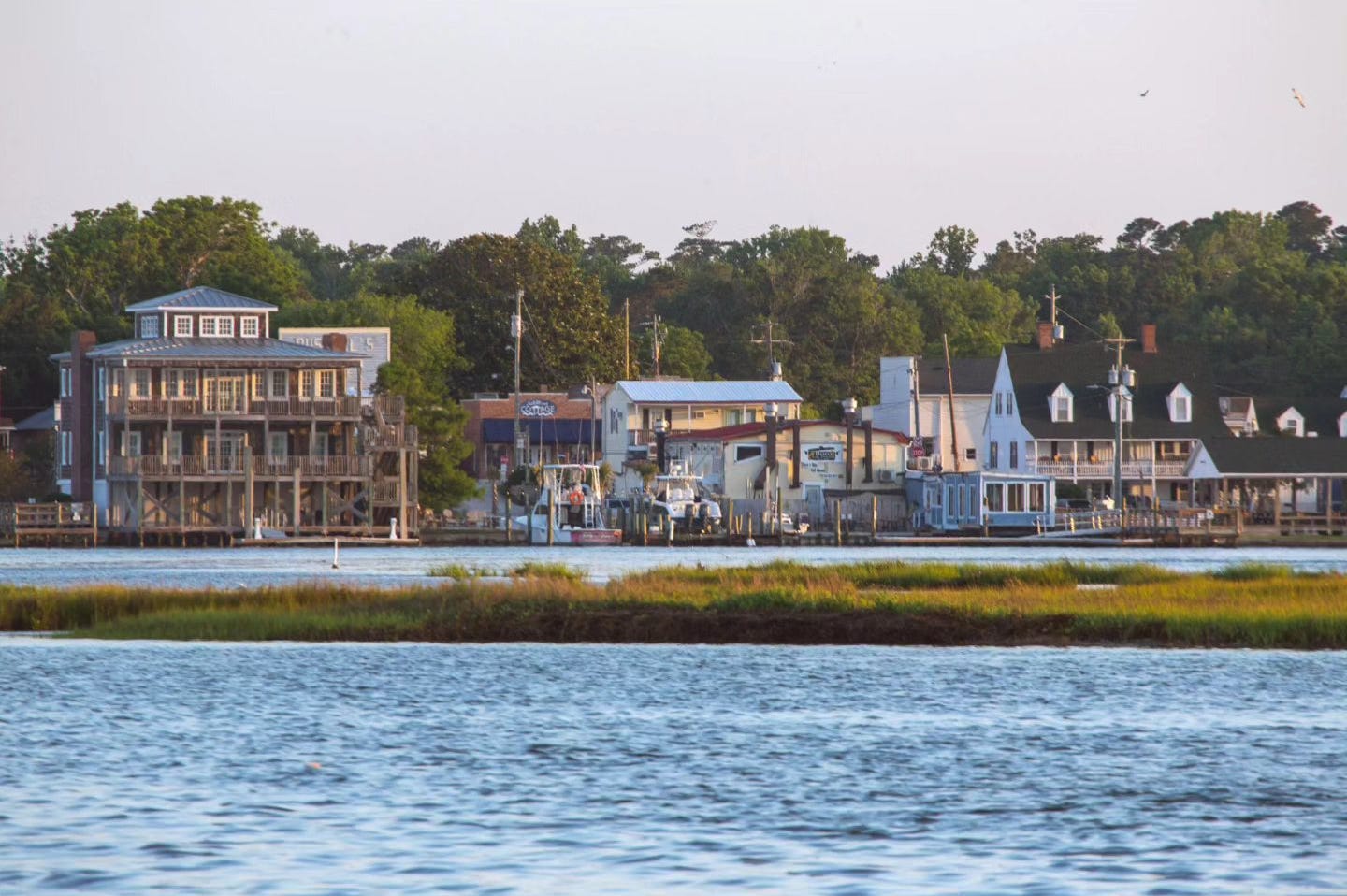


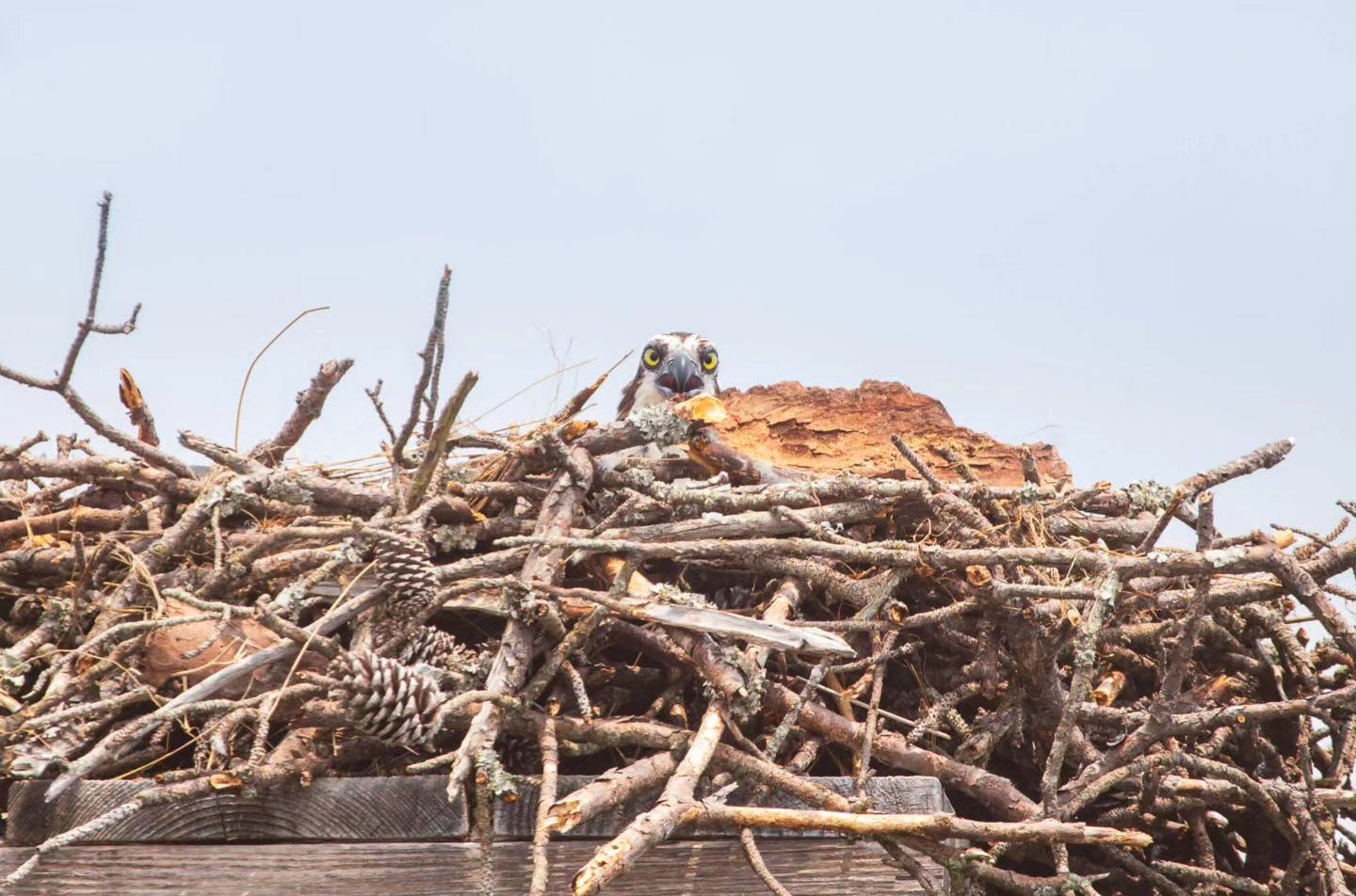
Continued safe passage!